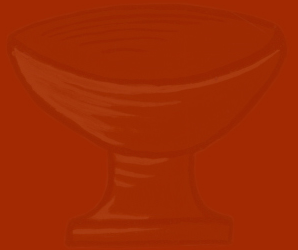
Saint Theodosia: Defender of Icons
About this icon
This half figure depicting Saint Theodosia shows her in nun's habit and holding a cross in her role as the defender icons. The prototype of this icon forms part of the great collection of icons held at the Monastery of St. Catherine, Sinai.
About Saint Theodosia
Saint Theodosia of Constantinople or Hagia Theodosia became one of the most venerated saints in Constantinople, being invoked particularly by the infirm. The fame of the saint was increased by the recovery of a deaf-mute in 1306. There are records of miraculous cures effected by Saint Theodosia's relics.
Saint Theodosia became one of the first martyrs of the iconoclast period. This period between the years 726 and 843, was a time when the Byzantine world was rocked by the controversy of iconoclasm. There were pious Orthodox believers who argued over whether venerating icons was an allowable Christian practice or whether it amounted to idolatry. A series of Byzantine emperors came down in support of iconoclasm, or the "breaking of images." Countless icons were destroyed during this period and many iconodules, or "lovers of icons," became martyrs and confessors.
Saint John of Damscus in support of icons wrote: "In former times God, who is without form or body, could never be depicted. But now when God is seen in the flesh conversing with men, I make an image of the God whom I see. I do not worship matter; I worship the creator of matter who became matter for my sake . . ." (On the Divine Images).
Theodosia was a nun living at a monastery in Constantinople. On January 19, 729, at the very beginning of the iconoclastic persecutions, the Emperor Leo III ordered that an icon of Christ which stood over the Chalkč Gate of the imperial palace be removed. While an officer was executing the order, a group of women gathered to prevent the operation. Among them was Theodosia, who shook the ladder strongly until the officer fell from it. The man died from his injuries, and Theodosia was arrested and brought to the Forum Bous, where she was executed by having a ram's horn hammered through her neck.
Following the Triumph of Orthodoxy over iconoclasm she was recognized as a martyr and saint, and her body was kept and venerated in the church of Hagia Euphemia en to Petrio. The remains were carried in church processions several times a year and hundreds of years after her death.
The Roman Catholic church celebrates the feast's day on the 18th of July, which was the date of her original feast day. The Orthodox church moved her commemoration to the 29th of May.




